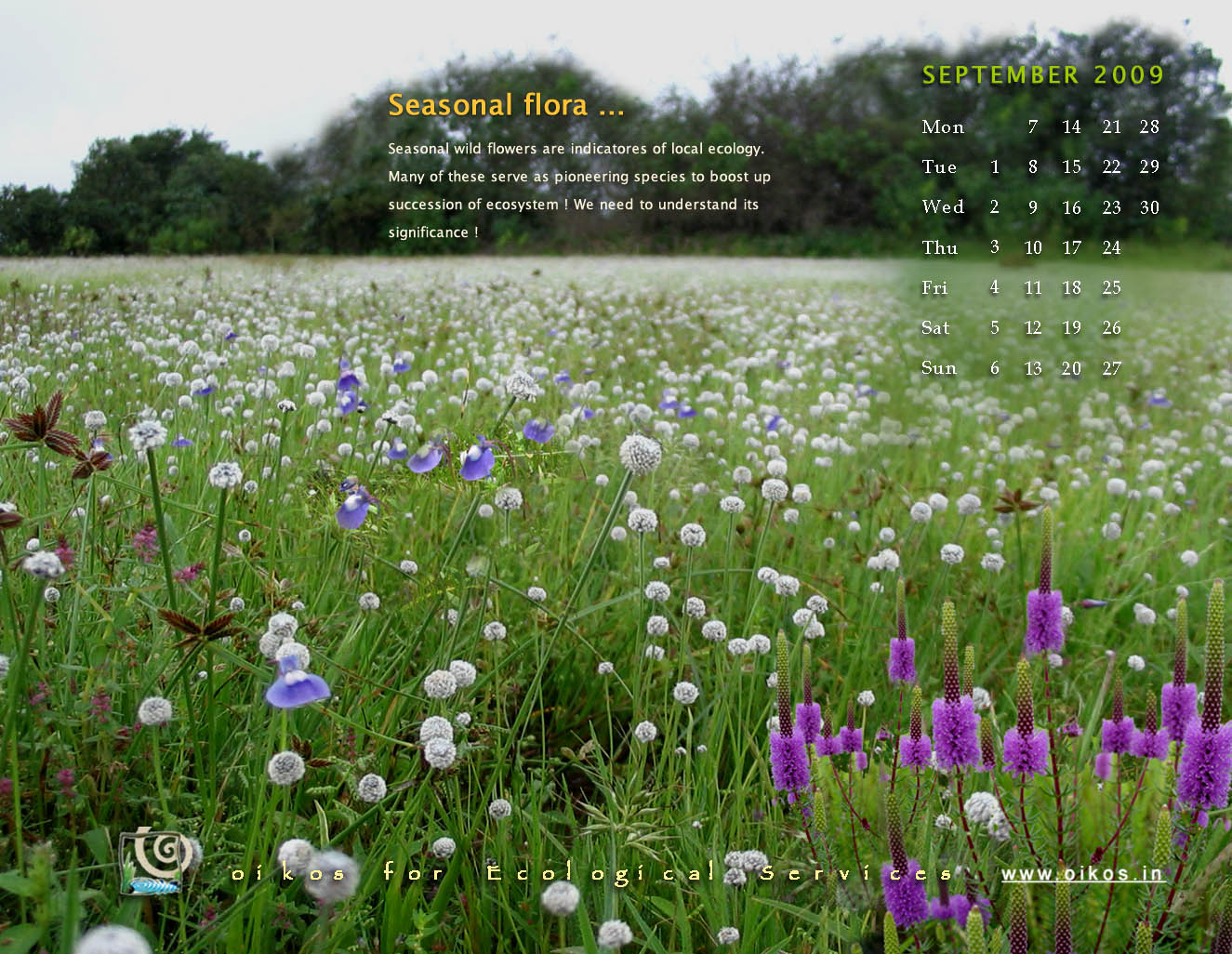Sep - 2009
| September - 2009 | |
| Dear Nature Lovers, | |
|
Right from the ‘valley of flowers’ in Himalayas to ‘Plateau of Kaas’ in Western Ghats, wild flower watching is becoming very popular & creating great affection for our native flowers & mountains. Let us know more about these flowers & their linkages in ecosystem.
|
|
| Regards, Ketaki & Manasi. |
|
| Seasonal beauties… In September, monsoon slows down to give a chance for the herbaceous flowers to emerge… these tiny seasonal herbs cover every corner of soil & make a wonderful display of shapes, sizes & colours… they are not just monsoon herbs but play a vital role in our ecosystem… As per rainfall regions, there are many wild flowers surfacing during those 2-3 months, like Sonaki, Terada, Smithias, ground orchids etc. It’s a wonderful sight when a vast plateau is covered with the colourful display of flowers… All this effort of colour, fragrance, shapes is for the next generation of plants itself. These plants germinate at onset of monsoon covering the barren plateaus & slopes, thus preventing splash erosion. They are important food source for herbivores like Barking deer. Once they start flowering, lot of bees, wasps, butterflies, & other insect visit them for nectar, pollens & in turn help in pollination essential for fruit set. BUT … Often, these herbs are indication of degraded conditions. When original forest is cut and open areas are created, these herbs emerge. Some of these serve as ‘Pioneering’ species i.e. they are the first species to boost up succession of vegetation cover. They help the process of soil formation, check soil erosion, and provide biomass for soil enrichment within their very short life cycle. Once monsoon recedes the seeds fall down in top soil layer & wait for first rains next year. ALSO … certain herbs are indicators of good health of the ecosystem. E.g. orchids or some herbs growing in understory of forest indicate better microclimate for regeneration. Certain herbs are associated only with high altitude plateaus. e.g. Kaas near Satara, many forts. Similar to other resources & nature, the herb cover too faces risk of elimination due to human activities. Even the invasive plant species like Cosmos, Raan-mari (Eupatorium sp), are proving dangerous to wild floral diversity. Many roadside & natural areas have seen drastic change in this decade from beds of terada, sonaki to aggressive growth of cosmos or raan-mari which looks good to human eyes but proves bad for wildlife. It is not needed to visit Himalay or Ghats to enjoy wild flowers, but they appear right in your garden once rain starts, these are known as ‘weeds’ ! The grass belts along roads, herbs coming up in lawn or pots are refuge for insects, butterflies & birds. Such weeds can be preserved & used wherever possible. What you can do - - These flowers are very delicate & all may not survive in the garden. Let’s not uproot them from their natural habitat for our garden. - Some weeds in garden have attractive flowers; do watch them & their visitors. - Do not encourage seed dispersal of invasive species like Cosmos, Lantana, try removing them as far as possible. - In landscaping, keep some open area as natural as possible for wild herbs. It will be difficult to conserve these herbs outside their natural habitat, so let’s protect mountain slopes, roadsides, stream beds, for a beautiful countryside & colourful displays of nature ! |
Click on any of the desired options below to get appropriate image.
Save it to computer and set it as desktop background for your computer monitor.
Oikos for ecological services
Ph. 020-25451875
Web: www.oikos.in


